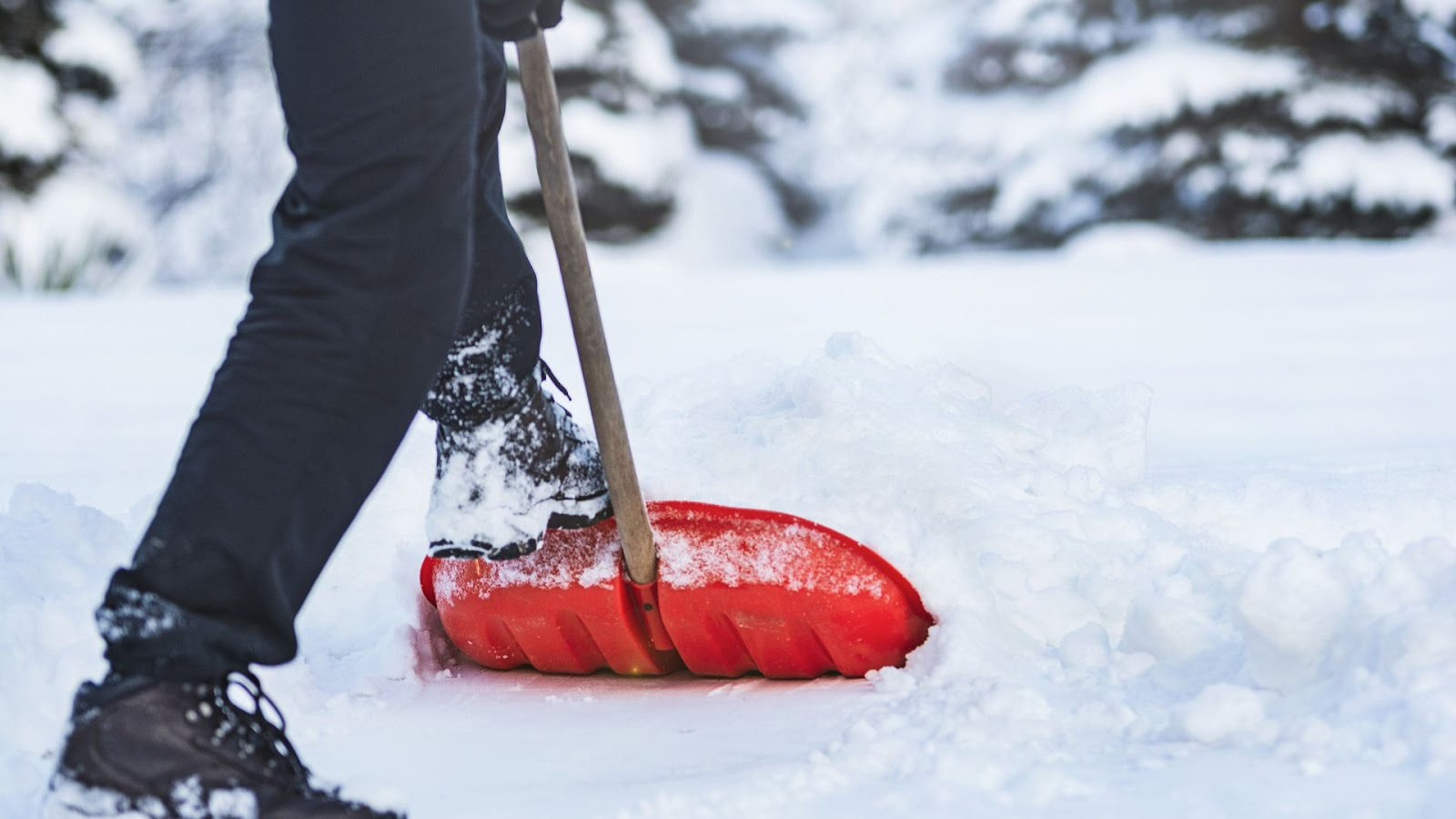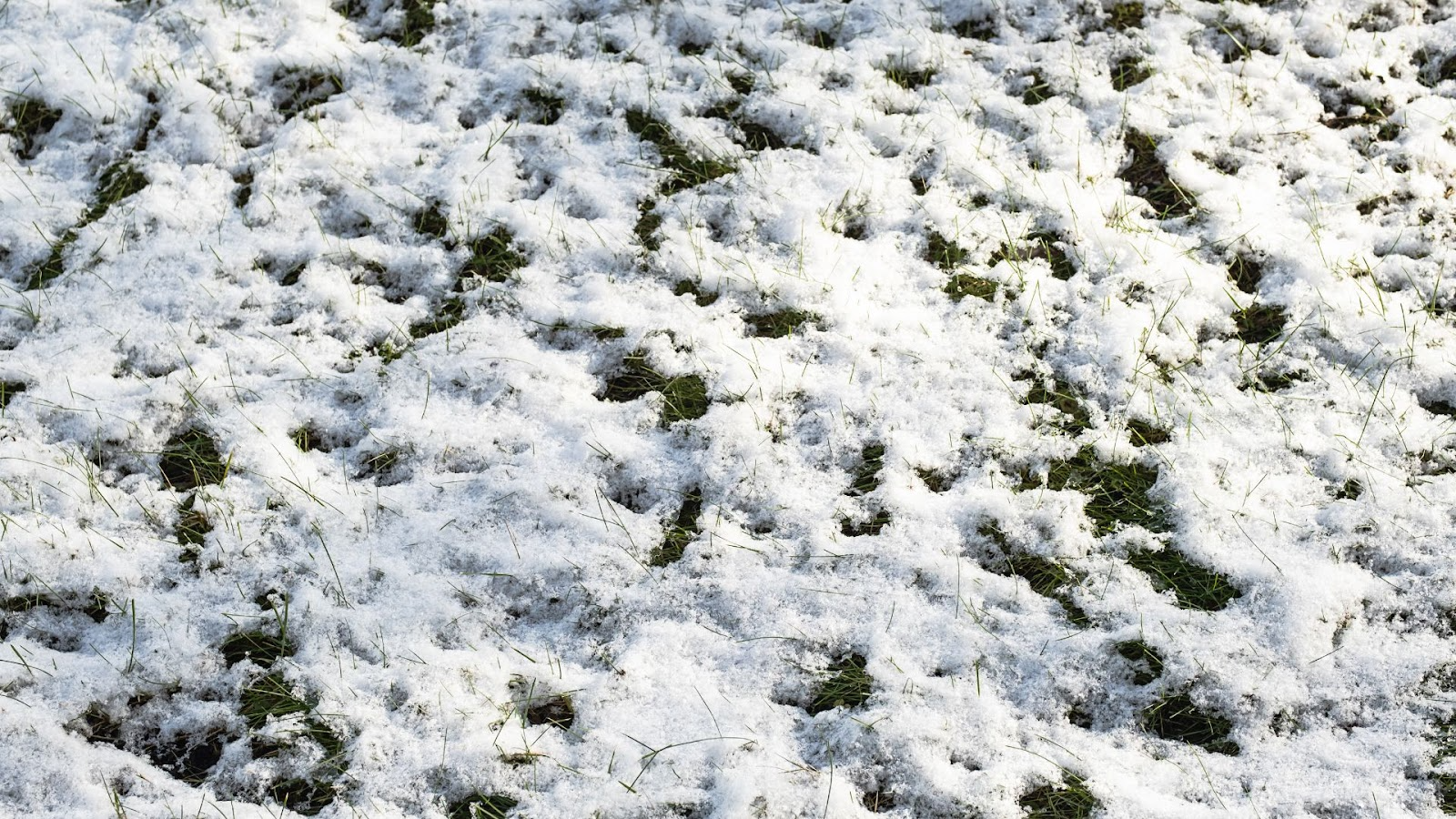If you live in Buffalo, you know winter doesn’t hold back. While heavy snow creates that postcard-perfect scenery, it can be tough on your lawn. Beneath all that weight, grass can suffocate, soil compacts, and moisture builds up in ways that affect how healthy your yard looks come spring.
Understanding the heavy snow effects on lawns isn’t just about avoiding brown patches, it’s about protecting the investment you’ve made in your outdoor space and giving it the best chance to bounce back once the thaw arrives.
This blog explores the heavy snow effects on lawns in Buffalo, common winter damages, and practical tips to protect and restore turf.
Key Takeaways:
At first glance, snow looks harmless, like a soft winter blanket covering your yard. But beneath that layer, your lawn is under stress. Heavy snow doesn’t just sit quietly; it compresses the soil, restricts airflow, and creates moisture conditions that can lead to lasting damage once the thaw begins. Understanding these hidden effects helps you prepare for spring recovery.
Ways Heavy Snow Harms Your Lawn:
In short, snow may be a seasonal reality in Buffalo, but the damage it leaves behind doesn’t have to be. Knowing how heavy snow affects your lawn can help you take proactive steps in fall, monitor conditions in winter, and use targeted recovery strategies in spring to restore a healthy, green yard.

Buffalo isn’t just another snowy city. It’s one of the snowiest in the U.S., averaging over 90 inches of snow annually, with some winters topping 100 inches. This volume of snow, combined with lake-effect weather patterns, creates lawn stress that’s much more intense than in regions with lighter, shorter winters.
Here’s what makes Buffalo lawns uniquely vulnerable:
Together, these conditions make it clear that Buffalo homeowners can’t rely on generic winter lawn advice. Tailored strategies are essential to combat the unique challenges created by the city’s snow-heavy climate.
Snow may melt in spring, but the damage it leaves behind can persist for months, or even years, if not addressed. When lawns are neglected after heavy snowfalls, the stress caused by compaction, mold, and suffocation doesn’t just disappear.
Instead, it compounds over time, reducing your lawn’s resilience and making recovery harder with each passing season.
Here are some long-term consequences of lawn neglect:
1. Persistent Bare Spots
Lawns that suffer from snow mold or heavy compaction often emerge with thin or bald areas. Without overseeding, these patches don’t fill in naturally and may spread, leaving your lawn uneven.
For example, you might notice dead patches reappearing every spring in the same shaded or high-traffic spots.
2. Weakened Root Systems
Continuous stress from soil compaction and lack of oxygen leaves roots shallow and fragile. Shallow-rooted grass struggles to survive summer heat and drought, leading to a vicious cycle of decline.
3. Increased Vulnerability to Pests
Weak turf invites lawn pests such as grubs and chinch bugs, which thrive in stressed soil. For example, areas weakened by snow mold can quickly turn into feeding grounds for grubs in late spring.
4. Opportunistic Weed Invasion
Bare soil patches are prime real estate for aggressive weeds like crabgrass and dandelions. Once established, these weeds outcompete recovering grass and make lawn restoration even more challenging.
5. Higher Maintenance Costs Over Time
What starts as minor neglect can lead to expensive fixes later, like full lawn renovation, reseeding large areas, or even resodding. In Buffalo, where winters are long, failing to prepare or repair early means compounding costs season after season.
Addressing bare spots, root health, and compaction early allows you to prevent pests, weeds, and expensive restoration work down the line. For Buffalo homeowners, proactive care is the difference between a resilient, green lawn and one that never fully recovers from winter’s toll.

Lawns that go into winter weak or stressed are far more likely to suffer compaction, fungal outbreaks, and delayed recovery in spring. The key to protection is a seasonal strategy of building resilience in fall, minimizing damage during winter, and helping grass bounce back after the thaw.
Lawns that go into winter strong can better endure months of snow load, freezing temperatures, and reduced sunlight. In regions like Buffalo, where snowfall exceeds 90 inches annually, turfgrass survival depends on how well it’s prepared during fall.
The goal is to maximize root energy reserves, minimize conditions for disease, and physically prepare the soil for compaction stress.
Proper fall care is less about appearance and more about physiology. A lawn with well-fed roots, aerated soil, proper mowing height, and debris-free coverage can “breathe” under snow, store energy for dormancy, and resist the pathogens that thrive in cold, wet conditions.
Also Read: Easy Lawn Rescue: How to Fix and Spot Over-Fertilization of the Lawn
Once snow blankets the lawn, your ability to actively manage turf is limited. But winter is not a “set it and forget it” season, small habits during these months often determine whether you see lush green grass or patchy, compacted bare spots in spring. In a place like Buffalo, where snow cover can last 100+ days, these preventive behaviors are critical.
Winter lawn care is about minimizing damage while the turf is dormant. Managing snow piles reduces salt and ice exposure, while keeping foot traffic off essentially preserves the turf’s energy reserves.
When spring arrives, these small habits will mean the difference between a lawn that rebounds quickly and one that struggles for months.
Also Read: Tips to Avoid Snow Compaction on Grass in Western NY
Lawns emerging from months of snow cover often look worn down, with flattened grass blades, yellow patches, and signs of snow mold or compaction. While this may seem alarming, it’s a natural response to prolonged dormancy.
The key is acting quickly in early spring to help turf rebound before weeds and pests exploit weak spots. With the right timing and techniques, you can transform a dull, winter-stressed lawn into a thick, resilient carpet of green by late spring.
With science-based preparation in fall, mindful snow management in winter, and strategic recovery in spring, you can maintain turf that not only survives but thrives. The difference comes down to consistency: small preventive steps now mean fewer dead patches, weeds, and costly repairs later.
Also Read: Lawn Rust Treatment: How to Identify, Fix, and Prevent Rust on Your Grass
Buffalo’s unique winter climate demands more than generic lawn care advice. Between heavy lake-effect snow, frequent freeze-thaw cycles, and long stretches of snow cover, lawns here face harsher challenges than in most U.S. regions.
Homeowners who adapt their care routines to these conditions can preserve turf health and prevent costly repairs come spring. Whether you prefer DIY methods or rely on local services like Percy’s Lawn Care, here are practical, region-tailored strategies.
Here are some key tips for Buffalo lawns:
1. Choose Cold-Hardy Grass Varieties
Opt for Kentucky bluegrass, fine fescue, or perennial ryegrass blends. These cool-season grasses bounce back faster after long dormancy. Local nurseries and extension offices often sell mixes adapted specifically for Buffalo’s snow-heavy conditions.
2. Use Snow-Safe Deicing Alternatives
Rock salt damages turf by pulling moisture from roots. Instead, use calcium magnesium acetate (CMA) or sand to reduce slip risks without killing grass. Many Buffalo hardware stores stock these options in winter prep season.
3. Hire Aeration and Overseeding Services in Spring
If DIY isn’t feasible, local lawn care companies offer early-spring aeration to relieve compaction and overseeding to fill salt-damaged patches. This is especially valuable for homeowners in older Buffalo neighborhoods with clay-heavy soils.
4. Plan Snow Pile Locations
When shoveling or snow-blowing, try to distribute piles evenly and avoid concentrating snow mixed with street salt along lawn edges. Redirecting piles onto gravel or non-grassy areas minimizes spring dieback.
5. DIY Mold Prevention
Rake leaves before the first snowfall to reduce snow mold risks. A late-fall fungicide treatment is an option for homeowners with repeated mold issues. You can consult with Percy’s Lawn Care for region-approved products.
From selecting resilient grass varieties to managing salt exposure and snow piles, the right mix of DIY practices and local services ensures a healthier, greener lawn by spring.
Heavy snow can silently damage lawns, causing compaction, root stress, and mold if left unchecked. With proper fall preparation, careful snow management during winter, and timely spring recovery, Buffalo homeowners can ensure their grass bounces back stronger, greener, and more resilient each year.
Small, consistent actions like debris clearing, aeration, and mindful snow handling make a big difference in maintaining lawn health despite harsh winters. Taking these steps now sets the stage for a lush, thriving lawn when the snow melts and warmer weather returns.
For dependable results, partner with a local lawn care expert like Percy’s Lawn Care for winter protection and spring revival. Schedule your seasonal service today to ensure your Buffalo lawn stays healthy, lush, and ready to thrive after the snow melts.
1. Can heavy snow actually insulate lawns and protect grass roots from extreme cold?
Yes, snow acts as a thermal blanket that insulates grass roots from bitter cold. It helps prevent winterkill and sudden temperature swings, increasing turf survival until spring thaws release moisture and nutrients.
2. Does heavy snow contribute to increased rodent or pest activity beneath the surface?
Deep snow provides cover for voles and mice, letting them tunnel and feed undetected. This often results in noticeable runways or chewed lawn patches when the snow melts, affecting spring appearance.
3. How does early spring snow melt affect lawn drainage and flooding risk?
Rapid snow melts oversaturated soil, creating water pooling and runoff. Compacted or clay-heavy lawns have poor drainage, risking localized flooding and delayed turf recovery after winter’s heavy snow.
4. Are there risks when heavy snow accumulates on newly seeded or sodded lawns?
Heavy snow shifts soil, washes away seed, and delays root establishment for new sod. It may cause patchy growth or bare spots, making post-thaw repair essential for new lawns.
5. Does foot traffic on snowy lawns increase long-term turf damage?
Walking on snow-covered grass compresses the snow and soil, crushing crowns and blades. This creates bare streaks and thinning patches, which persist into spring and require over-seeding.
6. Can snow lead to changes in lawn soil pH or fertility?
Meltwater from snow, especially mixed with salt or pollutants, can change soil pH and deplete nutrients. Spring soil testing and amendments are often needed for optimal grass regrowth.
7. Is there any benefit to removing heavy snow manually from lawn areas?In high-risk spots, carefully clearing excess snow can prevent prolonged suffocation and mold, but avoid aggressive removal—broad snow clearing isn’t needed unless piles cause potential ice buildup or delayed melt issues.